A ray of light falls normally on a rectangular glass slab.
Draw a ray diagram showing the path of the ray till it emerges out of the slab.
To solve the problem of drawing a ray diagram for a ray of light falling normally on a rectangular glass slab, we will follow these steps:
Step 1: Draw the rectangular glass slab
- Start by drawing a rectangle to represent the glass slab. Label the top side as the "Incident Surface" and the bottom side as the "Emergent Surface."
Step 2: Draw the incident ray
- Since the ray of light falls normally on the slab, draw a straight vertical line (the incident ray) that meets the top side of the rectangle at a right angle (90 degrees). Label this line as "Incident Ray."
Step 3: Indicate the normal line
- At the point where the incident ray meets the surface of the slab, draw a dashed line perpendicular to the surface of the slab. This line represents the normal line. Label it as "Normal."
Step 4: Draw the refracted ray inside the slab
- After the incident ray strikes the surface, it will enter the glass slab. Since it is falling normally, it will continue in a straight line without bending. Draw a straight line horizontally from the point of incidence to the opposite side of the slab. Label this line as "Refracted Ray."
Step 5: Draw the emergent ray
- When the refracted ray reaches the bottom surface of the slab, it will exit the slab. Since it is also emerging normally, draw a straight vertical line from the bottom of the slab to outside the slab. Label this line as "Emergent Ray."
Step 6: Label angles (if necessary)
- Since the ray is falling normally, the angle of incidence (i) and the angle of emergence (e) are both 0 degrees. You can label these angles if required.
Final Diagram
- Ensure that all lines are clearly labeled and the diagram is neat. The incident ray, refracted ray, and emergent ray should be clearly distinguishable.
- Start by drawing a rectangle to represent the glass slab. Label the top side as the "Incident Surface" and the bottom side as the "Emergent Surface."
- Since the ray of light falls normally on the slab, draw a straight vertical line (the incident ray) that meets the top side of the rectangle at a right angle (90 degrees). Label this line as "Incident Ray."
- At the point where the incident ray meets the surface of the slab, draw a dashed line perpendicular to the surface of the slab. This line represents the normal line. Label it as "Normal."
- After the incident ray strikes the surface, it will enter the glass slab. Since it is falling normally, it will continue in a straight line without bending. Draw a straight line horizontally from the point of incidence to the opposite side of the slab. Label this line as "Refracted Ray."
- When the refracted ray reaches the bottom surface of the slab, it will exit the slab. Since it is also emerging normally, draw a straight vertical line from the bottom of the slab to outside the slab. Label this line as "Emergent Ray."
- Since the ray is falling normally, the angle of incidence (i) and the angle of emergence (e) are both 0 degrees. You can label these angles if required.
- Ensure that all lines are clearly labeled and the diagram is neat. The incident ray, refracted ray, and emergent ray should be clearly distinguishable.
Topper's Solved these Questions
Similar Questions
A ray of light falls normally on a glass slab. Draw a diagram showing the path of the ray till it emerges out of the slab. What is the angle of incidence and angle of refraction at each surface of slab ?
View Solution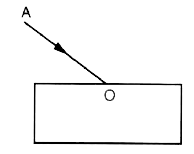
In the adjacent diagram, AO is a ray of light incident on a rectangular glass slab.
(a) Complete the path of the ray till it emerges out of the slab.
(b) In the diagram, mark the angle of incidence (i) and the angle of refraction (r) at the first interface. how is the refractive index of glass related to the angles i and r ?
(c) Mark angle of emergence by the letter e. how are the angles i and e related ?
(d) Which two rays are parallel to each other ? Name them
(e) Indicate in the diagram the lateral displacement between the emergent ray and the incident ray. state one factor that affects the lateral displacement.
View SolutionThe diagram alongside shows a light source P embedded in a rectangular glass block ABCD of critical angle 42∘. Complete the path of the ray PQ till it emerges out of the block. [Write necessary angles.]
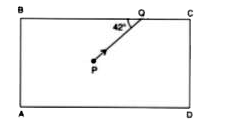
View SolutionA ray of light falls on a normally on a refracting face of a prism. Find the angle of prism if the ray just fails to emerge from the prism (μ=3/2).
View SolutionA ray of light falls normally on a rectangular glass slab.
Draw a ray diagram showing the path of the ray till it emerges out of the slab.
View SolutionIn the diagram below, PQ is a ray of light incident on a rectangular glass block.
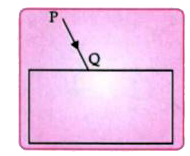
Copy the diagram and complete the path of the ray of light through the glass block. In your diagram, mark the angle of incidence by letter 'i' and the angle of emergence by the letter 'e'.
View SolutionFigure shows two identical prisms P and Q placed with their faces parallel to each other. A light ray AB of yellow colour is incident at the face of the prism P. Complete the diagram to show the path of the ray till it emerges out of the prism Q.

View Solution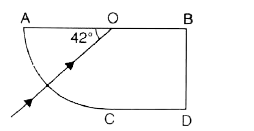
A ray of light enters a glass slab ABCD as shown in figure and strikes at the centre O of the circular parth AC of the slab. The critical angle of glass is 42∘. Complete the path of the ray till it emerges out from the slab. mark the angles in the diagram wherever necessary.
View SolutionFigure below shows two identical prisms A and B placed with their faces parallel to each other. A ray of light of single colour PQ is incident at the face of the prism A. complete the diagram to show the path of the ray till it emerges out of the prism B.
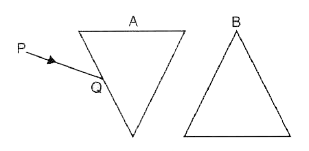
View SolutionA light ray falls on a rectangular glass slab as shown. The index of refraction of the glass, if total internal reflection is to occur at the vertical face, is
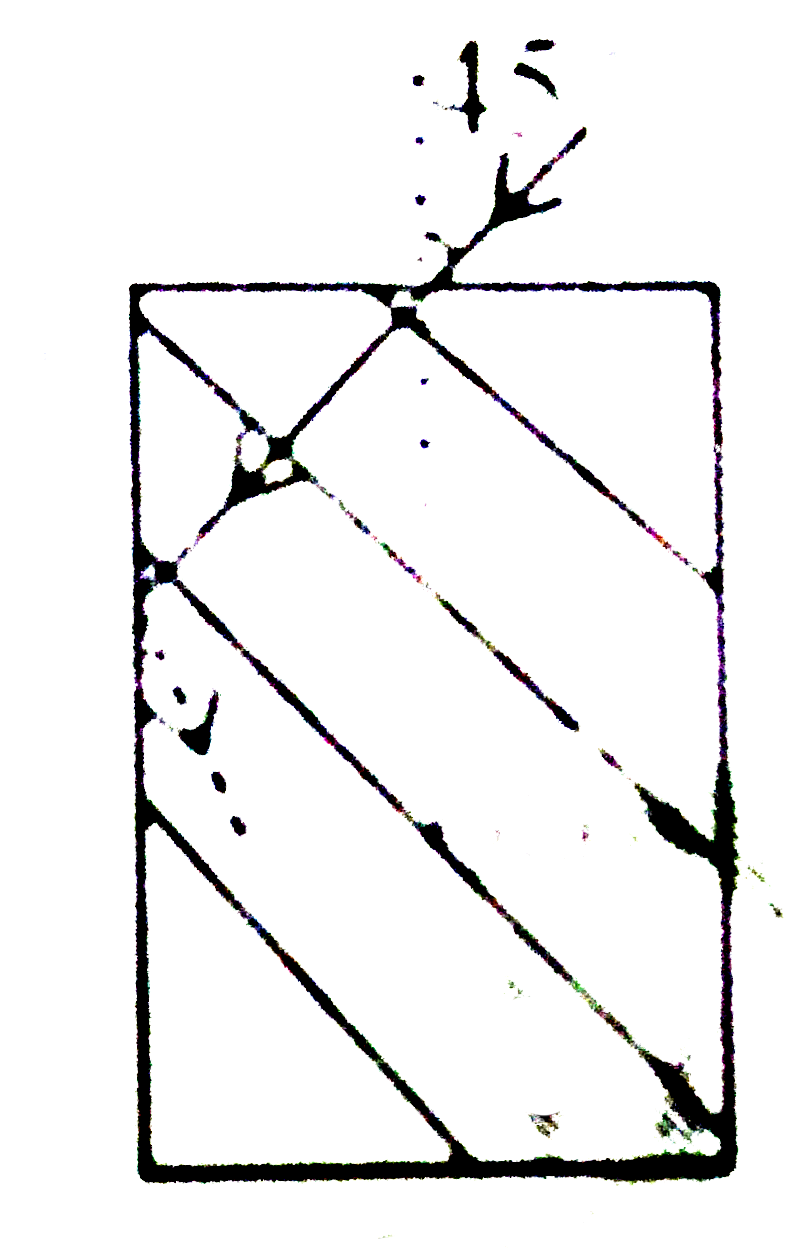
View Solution
